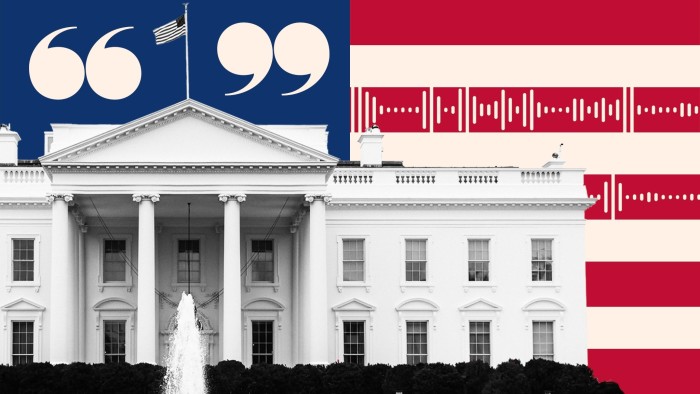Why Trump 2.0 might be good for investors

The stories that matter on money and politics in the race for the White House
The writer is president and chief investment strategist at Yardeni Research
Predicting political outcomes in the US is a much more hazardous profession than predicting the country’s stock market. Now try doing both, ie, predicting the outcome of the coming presidential and congressional elections and the resulting impact of the political and policy changes on the economy and financial markets.
Let’s give it a shot but narrow the exercise to what the next four years might be like if Donald Trump returns to the White House for a second term. That seems increasingly likely after the first presidential debate between Trump and Joe Biden.
The initial reaction of major financial markets was relatively muted. The most notable move was in bond markets where the 10-year US Treasury yield rose about 0.2 percentage points to 4.48 per cent, while the two-year note yield rose half as much. So the yield curve “disinvested” slightly as bond investors presumably discounted the prospect that under Trump 2.0, federal deficits might be larger, the economy might be stronger and inflation might be higher.
That’s because Trump, if elected, is likely to renew and even increase his 2017 tax cuts, which expire at the end of 2025. The more bullish expectations for the economy are despite the risk of further trade tensions with China. Trump is proposing to raise tariffs by 60 per cent on imports from the country (and by 10 per cent on all other US imports).
Many investors feared that Trump’s policies during his first term would have adverse economic and financial consequences. However, real GDP rose 8.5 per cent to a record high from the fourth quarter of 2016 to the fourth quarter of 2019, just before the pandemic. Over this same period, consumer price inflation remained subdued at around 2 per cent. The 10-year Treasury bond yield started and ended this pre-pandemic period around 2 per cent. The S&P 500 rose around 50 per cent from the end of 2016 through to the end of 2019.
Could such a benign outcome reoccur under Trump 2.0? It certainly is possible. The policies pursued by the White House can have an important impact on the economy and financial markets. However, those policies are often adjusted during the process of being enacted into law by Congress.
If the Republicans win the White House and both houses of Congress, Trump’s policies are less likely to get watered down by the political process. At present that is hard to predict given the political uncertainties, especially if the Democratic party’s top donors divert more of their funds to winning congressional races rather than the White House after Biden’s debate debacle.
But keep in mind that the US economy isn’t driven solely by Washington’s policymaking. Increasingly, the US economy has become technologically driven and industrially diversified with an exceptional entrepreneurial spirit. More than half of capital spending is on technology. Business spending on software and research and development is at a record high. The US capital markets provide ample financing for start-ups and innovations. The US economy has become less interest rate-sensitive. Last year, it showed signs of a productivity growth revival that is likely to continue through to the end of the decade. These are all positive developments for corporate earnings, which should drive the stock market to new highs over the rest of the decade.
Have your say

Joe Biden vs Donald Trump: tell us how the 2024 US election will affect you
Actually, Washington might meddle less with the economy in coming years, especially if Trump, who is inclined to favour the deregulation of business by the government, is re-elected. He would be freer to pursue such a course after the Supreme Court significantly reduced the power of the federal regulatory agencies to interpret vague laws passed by Congress. Trump would undoubtedly appoint judges and senior agency staff to roll back or limit the “administrative state”. He certainly would facilitate more US production of oil and gas, which would help to keep a lid on inflation.
History has shown that over time, the US economy and stock market have done well no matter who is in the White House. This doesn’t mean that Trump 2.0 would be risk-free. The two big risks under a Trump administration would be: one, a trade war that depresses global growth and revives inflation; second, mounting federal deficits that cause a debt crisis. However, America’s system of political checks and balances continues to work to moderate the extreme policy pursuits of whoever is in the White House.
Comments